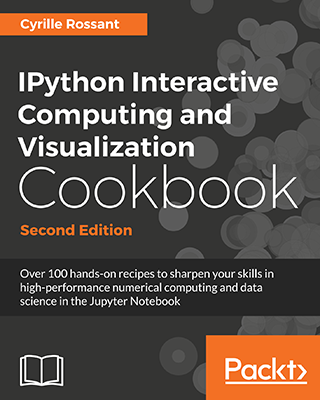Writing the IPython Cookbook, Second Edition
2018-02-12
 I'm pleased to announce the release of the IPython Cookbook, Second Edition, more than three years after the first edition. All 100+ recipes have been updated to the latest versions of Python, IPython, Jupyter, and all of the scientific packages.
I'm pleased to announce the release of the IPython Cookbook, Second Edition, more than three years after the first edition. All 100+ recipes have been updated to the latest versions of Python, IPython, Jupyter, and all of the scientific packages.
There are a few new recipes introducing recent libraries such as Dask, Altair, and JupyterLab. As usual, all of the code is available on GitHub as Jupyter notebooks.
However, the main novelty is that almost the entire book is now freely available on GitHub. The released text is available under the CC-BY-NC-ND license, while the code is under the MIT license. A few recipes are exclusive to the printed book and ebook, to be purchased on Packt and Amazon.
The writing process was much less painful than with the first edition. In this post, I'll give an overview of the technical process I've used to write the book, using Markdown, Jupyter Notebook, pandoc, and pelican.